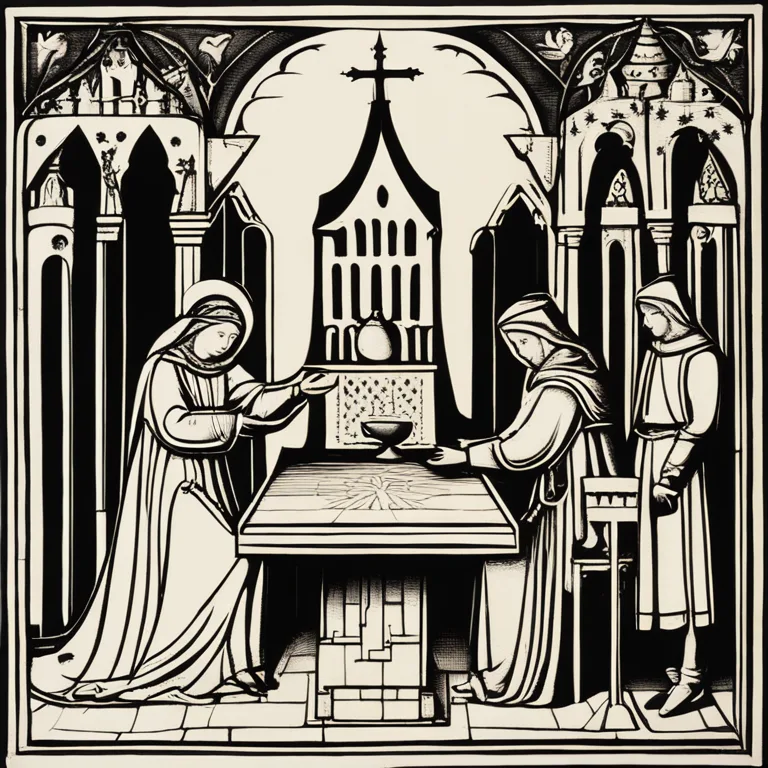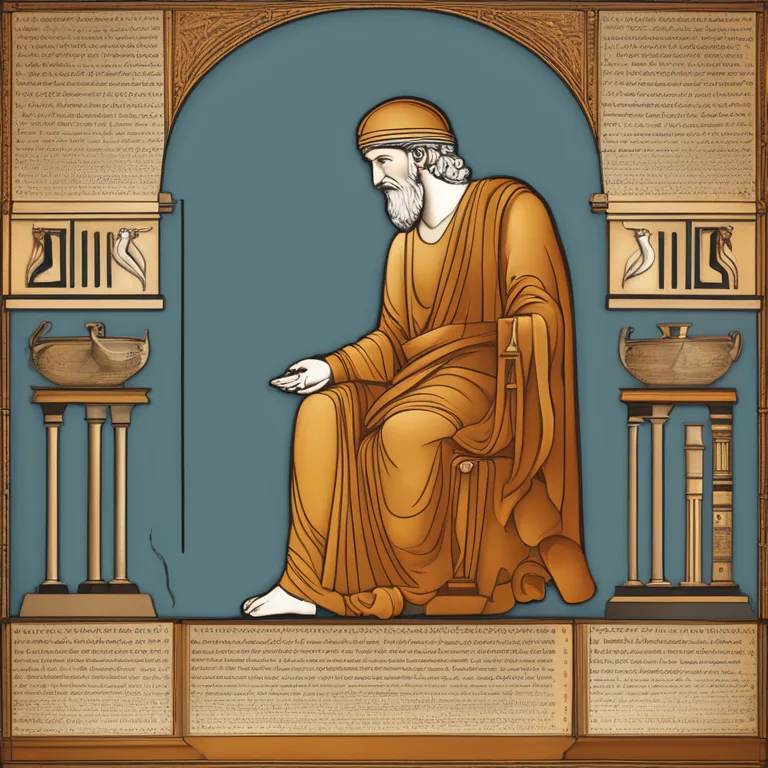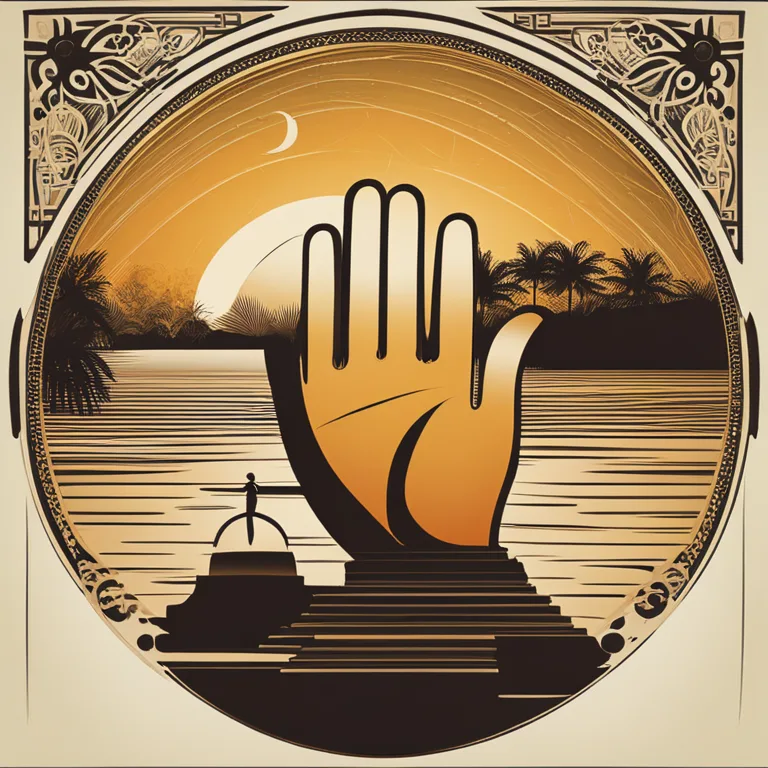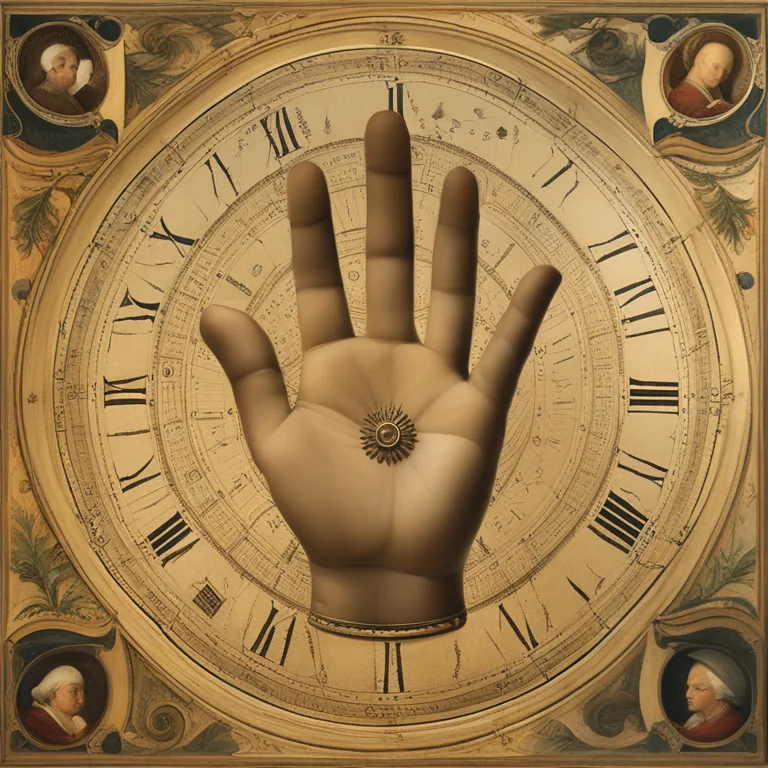
The Origins & Journey of Palmistry
Trace the fascinating history of palmistry, understanding its ancient roots and its evolution through cultures and time.
article by Nora Pennington
The Dawn of Palm Reading
The art of palmistry, or chiromancy, is believed to have its origins in ancient India, stemming from Hindu astrology and first mentioned in the Vedas, ancient sacred texts of spiritual knowledge. From India, the practice spread across the Eastern world. The Chinese book 'I Ching' speaks to the lore of hand analysis, further illustrating palmistry's deep cultural weave. To understand palmistry's longevity, one must acknowledge its resonance beyond predictive fortunes—reflecting instead on the intrinsic fascination humans possess regarding self-discovery and future potential.

Greek Philosophical Influence
The Western propagation of palmistry can be significantly accredited to the Greek philosopher Anaxagoras, who believed that the hands are a source of power and contain clues to our character. Additionally, Aristotle's fascination with the hands, which he considered 'the organ of organs,' further ingrained the practice within Greek thought. His influence arguably fueled the widespread acceptance of palmistry during his time and laid the groundwork for its expansion through Alexander the Great and beyond into Europe and the Western world.

A Shift During Medieval Times
As palmistry meandered through the annals of history, it encountered resistance, particularly during the Middle Ages. With Christianity's rise in Europe, anything deemed occult or pagan was often ostracized or condemned. This led to a period of decline for palmistry, relegating it to the background and often practiced by Romani travelers, where it garnered the colloquial term 'gypsy fortune-telling,' perpetuating both its mystical allure and contentious standing.

Renaissance: Rebirth and Recognition
The Renaissance marked a period of renewed interest in the arts and sciences, which included palmistry. Great minds, including artist, and polymath Leonardo da Vinci, contributed to the study of the human body in-depth, recognizing hands as a microcosm of the psyche. Books and treatises dedicated to palmistry began to emerge, legitimating the art as a subject worthy of intellectual pursuit.

Modern Palmistry's Evolution
Into the 19th and 20th centuries, palmistry underwent another transformation. Leaders in the field, like William John Warner, known as Cheiro, brought palmistry back into the limelight, providing readings to famous individuals and authoring books that are still referenced today. As we step into 2024, palmistry continues to evolve with technology, such as apps and online readings, expanding the reach and accessibility of palm readings to a global audience. The practice's psychological aspects are sometimes incorporated into therapy and character assessments, showcasing its versatility.
The Digital Age and Beyond
In our ever-progressing digital age, palmistry has found new platforms and fresh audiences. Online forums, digital books, and interactive palmistry websites provide enthusiasts with the ability to learn and engage with the craft from anywhere in the world. As society becomes increasingly curious about holistic and alternative sciences, palmistry's appeal has swelled. It finds itself at the junction of entertainment, self-help, and spiritual exploration, assuring its place in the zeitgeist for years to come.
Published: 1/3/2024
Modified: 1/3/2024
More predictions
Come back here soon to learn more about yourself and your future


The Mysteries of Palmistry
Delve into the ancient art of palmistry to uncover the secrets held within the lines and features of your hands.


Palmistry Insights
Delve into the lines of your hands with our comprehensive guide to palmistry and discover what your palms may reveal about your life's path, personality, and future.


The Art of Palmistry: Lifelines to Fate
Delve into the ancient practice of palmistry and discover how the lines on your palm can reveal insights about your personality, destiny, and love compatibility.